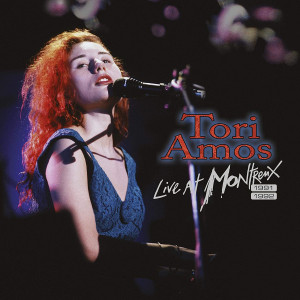 Once upon a time, back in the late ’60s or early ’70s, someone used a camera at just the right moment. Pure serendipity, as lucky as it gets: David Crosby’s house in L.A., Joni Mitchell with a guitar, playing and singing – and a visiting Eric Clapton, focusing tight as a laser beam on what Joni’s doing.
Once upon a time, back in the late ’60s or early ’70s, someone used a camera at just the right moment. Pure serendipity, as lucky as it gets: David Crosby’s house in L.A., Joni Mitchell with a guitar, playing and singing – and a visiting Eric Clapton, focusing tight as a laser beam on what Joni’s doing.
There you have her: the woman songwriter/singer, being taken seriously by the big boy guns. One of my favourite photos.
That particular class nearly became extinct in the wash of hard-edged rap and hip-hop that swamped the ’80s: the female singer-songwriter, either fronting or solo. Mitchell, Laura Nyro, Judy Collins, Carol King, Carly Simon, the list goes on. All brilliant at what they did, and the survivors (we lost Laura Nyro to cancer) still brilliant at what they do, but as a musical art form, it was nearly lost.
When Tori Amos’s Little Earthquakes was released, it took three listens to decide that, yes, her lyrics were worth trying to carve my way through some extremely off-putting vocal mannerisms. I take my lyrics seriously. I should also admit up front that for various reasons I am well beyond fussy and into fanatic when it comes to piano. Elton John, for instance, makes me want to eat my own head to avoid having to listen to him.
But those lyrics of Tori’s, oh my. Song after song, there they were, nailing it and nailing me. I bought a ticket for her San Francisco show, and settled in to watch and listen. By the time she finished “Winter,” a wrenching, exquisite song about her father, I was astonished to find myself sobbing uncontrollably. She’d pulled off something rare: managed to hit every emotional button I have, and never left me feeling manipulated.
Watching and listening to her shows at Montreux from that same period, I wasn’t expecting the same emotional reactions. I’m older, my responses have taken turns down different alleys and, in any event, I’m harder to blindside. How much of what hits a person in the gut at 30 will do the same at 50?
Well — there’s always Tori Amos.
The piano? Yes, she has a highly idiosyncratic style. But she knows her instrument, and her music matches her lyrics, on every level. She’s not writing poetry and then crafting music to fit: she’s writing complete songs. My kind of singer/songwriter.
The Montreux shows cover much of the same material from two different appearances, and it’s an interesting time capsule. You can hear her confidence growing, in the space of time elapsing between the two recorded gigs. Contrast the material she covers at both shows: “Crucify” has more passion in the first show, but sharper teeth in the second. “Silent All These Years,” a song that hits way too close to where I live, is wistful for the first show, darker and angrier for the second. The material didn’t have to grow in order to evolve: the woman who created it did the evolving. So did I, her audience. And playing “Winter” yesterday, a bare month after I went to a family funeral and stopped to rest a hand on my own father’s headstone, brought me back to tears.
If you’re a fan of Amos’s, this DVD/CD pairing is a must-have. If you aren’t, I’d recommend a look and listen, and then googling those lyrics, because every word she writes kicks like a mule.
(Eagle, 2008)
